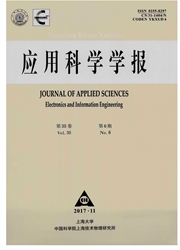

 中文摘要:
中文摘要:
在基于接收信号强度指示(received signal strength indicator,RSSI)的射频识别(radio frequency identification,RFID)室内定位系统中,由于环境干扰的非均匀性,定位环境中不同区域的信号传播模型存在差异.为此提出一种基于区域划分的定位方法,将定位区域划分为多个三角形子区域.定位过程中依据待定位标签的RSSI值经多轮投票机制确定其所在子区域,然后分别估算各子区域的环境因子和路径损耗值来建立子区域的定位模型,实现环境自适应.在此基础上引入虚拟参考标签概念,在定位区域内构造虚拟信号强度空间,并提出一种最近邻K值自校正方法选择最近邻标签,采用最近邻方法进行定位坐标计算.仿真结果表明,在复杂的低标签密度环境下,定位精度和稳定性比经典的LANDMARC和VIRE方法有显著提高.
 英文摘要:
英文摘要:
In an RSSI-based RFID indoor localization system, the signal propagation model in each sub-region is different from others due to heterogeneity of environmental interference distribution in the area. A region division-based localization method is proposed to divide the localization region into many triangle sub-regions. A multi-round voting method is used to search the sub-region where the target object is located. We then build a signal propagation model by estimating the environmentM factor and path loss value of that sub-region. By introducing virtual reference tags~ we construct a virtual signal strength space and find the nearest neighbor tags, and then calculate coordinates of the target with a self-correcting K nearest neighbor algorithm presented in this paper. Simulation experiments show that estimation accuracy and adaptability of the proposed method are significantly higher than that of LANDMARC and VIRE, especially in complex and low tag density environments.
 同期刊论文项目
同期刊论文项目
 同项目期刊论文
同项目期刊论文
 Integration technology of collaborative computing system over multiple virtual machines oriented for
Integration technology of collaborative computing system over multiple virtual machines oriented for 期刊信息
期刊信息
